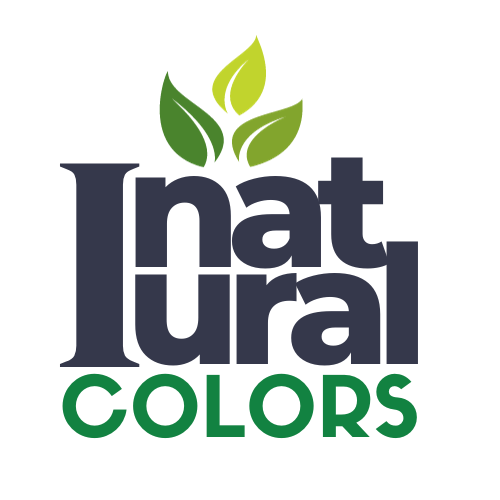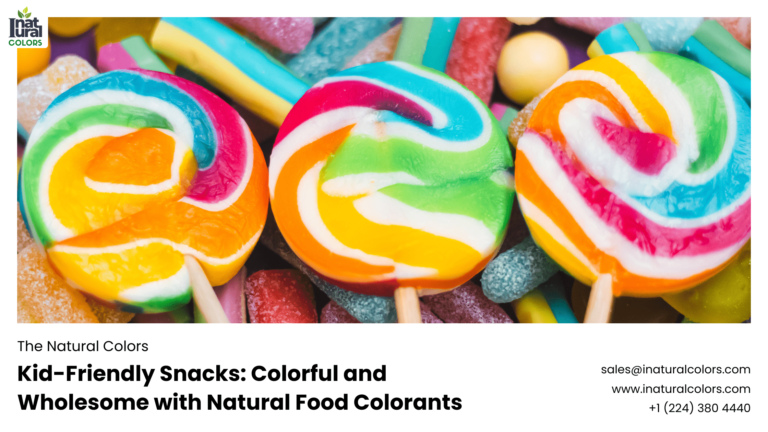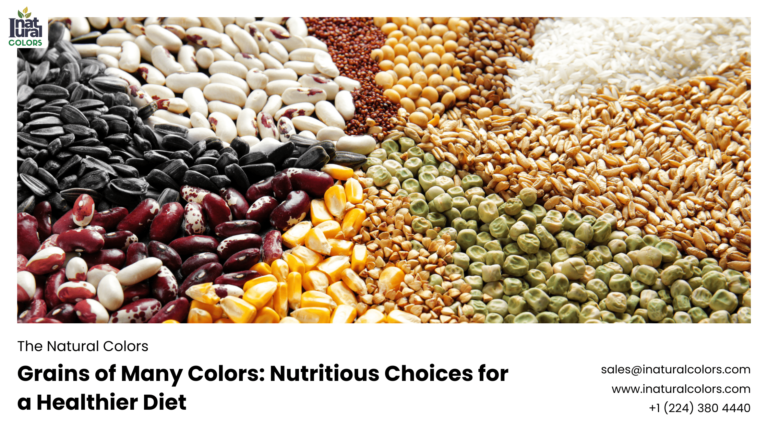Beautiful Plants For Your Interior

Natural Colors – Outline
- Introduction
- Brief overview of the topic
- Importance of food presentation
- The Evolution of Food Coloring
- Historical use of natural colors
- Introduction of synthetic colors
- Return to natural coloring
- Health Considerations
- Health risks associated with synthetic colors
- Benefits of natural colors
- Flavor and Quality Enhancement
- Impact on flavor
- Influence on perceived quality
- Consumer Demand for Natural Ingredients
- Growing consumer awareness
- Market trends and statistics
- Natural Colors in Professional Cooking
- Popular natural colorants used by chefs
- Techniques for using natural colors
- Environmental Impact
- Sustainability of natural vs. synthetic colors
- Eco-friendly practices in sourcing natural colors
- Cultural and Aesthetic Appeal
- Cultural significance of colors in food
- Aesthetic preferences in different cuisines
- Psychological Effects of Color in Food
- How color affects appetite and mood
- Studies on color psychology in food
- Regulatory and Safety Standards
- Regulations on food coloring
- Safety standards for natural colors
- Case Studies of Chefs and Restaurants
- Examples of chefs using natural colors
- Success stories from restaurants
- Challenges and Solutions
- Challenges in using natural colors
- Innovations and solutions in the culinary industry
- DIY Natural Food Coloring
- How to make natural food colors at home
- Tips for home cooks
- Future of Food Coloring
- Emerging trends in natural coloring
- Predictions for the future
- Conclusion
- Recap of key points
- Final thoughts on the importance of natural colors
- FAQs
- What are natural food colors?
- Are natural food colors safe?
- How can I use natural food colors at home?
- Do natural food colors affect taste?
- Where can I buy natural food colors?
Why Chefs Prefer Natural Colors
Introduction
Have you ever wondered why some dishes look so vibrant and appetizing? It’s not just about the taste; the visual appeal plays a significant role in our dining experience. In recent years, there has been a noticeable shift in the culinary world towards the use of natural colors. Chefs, from Michelin-starred professionals to home cooks, are increasingly favoring natural colors over synthetic alternatives. But why is that? Let’s delve into the reasons behind this colorful trend.
The Evolution of Food Coloring
Historical Use of Natural Colors
Long before the advent of synthetic dyes, ancient civilizations used natural ingredients to color their food. Saffron, turmeric, and beet juice were commonly used to add vibrant hues to dishes. These natural colorants were not only valued for their aesthetic appeal but also for their nutritional benefits.
Introduction of Synthetic Colors
With the industrial revolution came the introduction of synthetic food colors. These artificial dyes became popular due to their bright, consistent hues and cost-effectiveness. However, over time, concerns about their health implications began to surface, leading to a gradual shift back to natural options.
Return to Natural Coloring
Today, there is a renewed interest in natural food colors. This shift is driven by a combination of health concerns, consumer demand for cleaner labels, and an increasing awareness of environmental sustainability.
Health Considerations
Health Risks Associated with Synthetic Colors
Synthetic food colors have been linked to various health issues, ranging from allergic reactions to hyperactivity in children. Some studies suggest a possible connection between artificial dyes and cancer. These health concerns have prompted many chefs to seek safer alternatives.
Benefits of Natural Colors
Natural colors, derived from fruits, vegetables, and spices, are generally considered safer. They are free from the harmful chemicals found in synthetic dyes and often come with added nutritional benefits. For instance, beet juice not only adds a rich red hue but also provides antioxidants and vitamins.
Flavor and Quality Enhancement
Impact on Flavor
Natural colorants can enhance the flavor of a dish. Unlike synthetic dyes, which are flavorless, natural ingredients like turmeric and saffron impart a distinct taste. This can elevate the overall culinary experience, making dishes more enjoyable.
Influence on Perceived Quality
The use of natural colors often signals high quality to consumers. People associate natural ingredients with freshness and authenticity. This perception can enhance the appeal of a dish, making it more attractive to diners.
Consumer Demand for Natural Ingredients
Growing Consumer Awareness
Consumers today are more informed about what goes into their food. There is a growing preference for natural, organic, and non-GMO products. This shift in consumer behavior is driving the demand for natural food colors.
Market Trends and Statistics
The market for natural food colors is expanding rapidly. According to industry reports, the global market for natural food colors is projected to reach $3.2 billion by 2025. This growth is a testament to the increasing consumer demand for cleaner, more natural products.
Natural Colors in Professional Cooking
Popular Natural Colorants Used by Chefs
Chefs use a variety of natural colorants to create visually stunning dishes. Some popular choices include:
- Beet juice for red
- Turmeric for yellow
- Spirulina for blue-green
- Paprika for orange
Techniques for Using Natural Colors
Using natural colors effectively requires some skill and creativity. Chefs often experiment with different extraction methods and combinations to achieve the desired hue. For instance, boiling vegetables or fruits can extract vibrant colors that can be used in sauces and desserts.
Environmental Impact
Sustainability of Natural vs. Synthetic Colors
Natural colors are generally more sustainable than synthetic dyes. They are biodegradable and often sourced from renewable resources. On the other hand, synthetic colors are derived from petroleum, a non-renewable resource, and their production process can be harmful to the environment.
Eco-Friendly Practices in Sourcing Natural Colors
Many chefs and food producers are adopting eco-friendly practices to source natural colors. This includes using organic farming methods and supporting fair trade practices. These efforts contribute to a more sustainable food system.
Cultural and Aesthetic Appeal
Cultural Significance of Colors in Food
Colors hold significant cultural meanings in food. For example, in Indian cuisine, the vibrant yellows and reds from turmeric and saffron are not just for visual appeal; they carry cultural and spiritual significance. Understanding these cultural nuances is important for chefs aiming to create authentic dishes.
Aesthetic Preferences in Different Cuisines
Different cuisines have different aesthetic preferences. Japanese cuisine, for example, often features subtle, natural colors that highlight the freshness of the ingredients. In contrast, Latin American dishes might showcase bold, bright colors that reflect the vibrant culture.
Psychological Effects of Color in Food
How Color Affects Appetite and Mood
Color plays a crucial role in our perception of food. Bright, vibrant colors can stimulate appetite and create a sense of excitement. On the other hand, dull or unnatural colors might deter people from eating a dish. Studies have shown that color can also influence our mood, with certain hues evoking feelings of warmth and comfort.
Studies on Color Psychology in Food
Numerous studies have explored the psychology of color in food. For instance, red and yellow are known to stimulate appetite, which is why they are often used in fast-food branding. Understanding these psychological effects can help chefs design dishes that not only look appealing but also enhance the dining experience.
Regulatory and Safety Standards
Regulations on Food Coloring
Regulations on food coloring vary by country. In the United States, the FDA has approved specific natural and synthetic colors for use in food. In the European Union, the use of certain artificial colors is restricted. These regulations aim to ensure the safety and quality of food products.
Safety Standards for Natural Colors
Natural colors must also meet safety standards. This includes ensuring they are free from contaminants and sourced from reputable suppliers. Chefs and food producers must stay informed about these standards to ensure their dishes are safe and compliant.
Case Studies of Chefs and Restaurants
Examples of Chefs Using Natural Colors
Many renowned chefs have embraced natural colors in their culinary creations. For example, Chef Alice Waters of Chez Panisse is known for her use of fresh, organic ingredients that add natural color to her dishes. Similarly, Chef René Redzepi of Noma uses local, seasonal ingredients to create visually stunning and flavorful dishes.
Success Stories from Restaurants
Restaurants that prioritize natural ingredients often receive positive reviews and attract a loyal customer base. For instance, farm-to-table restaurants that emphasize natural colors and flavors have seen a surge in popularity. These establishments demonstrate that diners appreciate and seek out naturally colored dishes.
Challenges and Solutions
Challenges in Using Natural Colors
Using natural colors comes with its own set of challenges. Natural colorants can be less stable and more variable in hue compared to synthetic dyes. They may also have shorter shelf lives and be more expensive to source.
Innovations and Solutions in the Culinary Industry
The culinary industry is continually innovating to overcome these challenges. Advances in food technology have made it easier to extract and stabilize natural colors. Additionally, chefs are finding creative ways to use seasonal and local ingredients to ensure a consistent supply of natural colorants.
DIY Natural Food Coloring
How to Make Natural Food Colors at Home
Home cooks can easily make their own natural food colors using common ingredients. For example:
- Red: Blend cooked beets or use pomegranate juice.
- Yellow: Mix turmeric powder with water.
- Green: Blend spinach or parsley.
- Purple: Use blueberry or blackberry juice.
Tips for Home Cooks
When using natural colors at home, it’s important to remember a few tips:
- Start with small amounts: Natural colors can be potent, so start with a small amount and adjust as needed.
- Experiment with combinations: Mixing different natural colorants can yield unique hues.
- Store properly: Natural colors should be stored in the refrigerator and used within a few days.
Future of Food Coloring
Emerging Trends in Natural Coloring
The future of food coloring is leaning heavily towards natural options. Emerging trends include the use of microalgae, edible flowers, and exotic fruits. These ingredients not only add vibrant colors but also offer unique flavors and nutritional benefits.
Predictions for the Future
As technology advances, we can expect to see even more innovative natural colorants. The focus will likely be on sustainability, health benefits, and enhancing the overall dining experience. Chefs will continue to push the boundaries, creating dishes that are as visually appealing as they are delicious.
Conclusion
In conclusion, the preference for natural colors in the culinary world is driven by a combination of health, environmental, and consumer factors. Natural colorants offer a safer, more sustainable, and often more flavorful alternative to synthetic dyes. As consumer awareness continues to grow, the demand for natural ingredients will likely increase, shaping the future of food coloring. So, the next time you see a beautifully colored dish, you can appreciate the thought and care that went into choosing natural hues.
FAQs
What are natural food colors?
Natural food colors are derived from plant, animal, or mineral sources. They are used to add color to food and beverages without synthetic chemicals.
Are natural food colors safe?
Yes, natural food colors are generally considered safe. They are free from harmful chemicals found in synthetic dyes and often come with added nutritional benefits.
How can I use natural food colors at home?
You can use natural food colors at home by extracting pigments from fruits, vegetables, and spices. For example, you can use beet juice for red, turmeric for yellow, and spinach for green.
Do natural food colors affect taste?
Yes, natural food colors can affect the taste of a dish. Unlike synthetic dyes, which are flavorless, natural colorants like turmeric and beet juice add their own unique flavors.
Where can I buy natural food colors?
Natural food colors can be purchased at health food stores, specialty grocery stores, and online. Look for products labeled as natural, organic, or non-GMO for the best quality.



